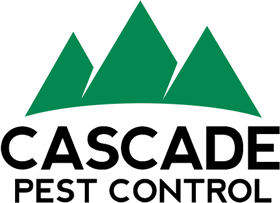Author: Kurt Treftz, Cascade Pest Control
Whether you’re a new transplant to the greater Puget Sound region or you’re a seasoned Washingtonian, it’s important to be informed about rats. Unfortunately they are a plague to our area due to the damp, forested communities that we inhabit.
Rats and rodents have become accustomed to relying on our spaces and waste to survive, so they should be on your radar if they haven’t been already. Some rat species were here before we were, others immigrated, but all can be harmful to human health and safety if ignored.
Cascade Pest Control technicians are skilled at identifying and treating the type of rat you’re dealing with. We are also committed to providing a proactive, prevention-focused rat control plan. Our rat exterminator technicians will work with you to identify, abate, and protect against future rat infestations.
Common Washington Rats
There are several species of rats that are popular in our area that you should be familiar with. Understanding their characteristics and behaviors is helpful in effectively removing and preventing them from harming your space.
Norway Rats
This resilient species of “Old World Rat” was introduced to our area by early voyagers coming to our area by boat. They’re quite adaptive and quickly became accustomed to living in close proximity to humans. They have also come to be known as sewer or brown rats colloquially.
Norway rats are about 16 inches long with a long, scaly tail. They typically have brownish fur, with grey underbellies. You’ll most often find these rats burrowed around gardens, woodpiles, or the foundation of your home or office. They aren’t nimble on land, but they are very good swimmers, so they tend to camp out near a reliable source of water so they only have to scavenge for food. Watch out for your trash or compost piles–these rodents will eat anything from meat to grains.
Black Rats / Roof Rats
This species is commonly known as the roof rat, and they’re similar in appearance to the Norway rat, aside from color and shape. As the name may imply, these rats are darker in color than Norway rats, and they’re also more slender. They are quite adept at jumping and climbing, so keep an eye out in your attic space for signs of entry.
We’ve recently had an influx of black rat sightings in communities with older homes and buildings. Especially if you have overgrown vines, large trees, or power lines near your space, you’ll need to watch out for roof rats. They have been known to scale these structures and gain access to your space from above.
Bushy-Tailed Wood Rats / Pack Rats
Bushy-tailed wood rats, also known as pack rats, have an eye for shiny items. Their characteristic bushy tail is accompanied by large round ears and brown-black fur. This is the most tolerant species for colder weather, making them a persistent threat all year long.
Pack rats are adept climbers and jumpers, so like with black rats, you should be diligent about trimming any vines or tree limbs that are close to your eaves or gutters. These could turn into easy access points for wood rats. Other signs of nesting might be a collection of trinkets surrounded by shredded materials or rodent filth.
Kangaroo Rats
Despite what the name may imply, this species isn’t as closely related to rats as you might think. They are described as rats because of their close physical resemblance to them. It has an extra toe on its hind legs that allows for better jumping long distances. It can be identified further by it’s golden brown coloring and white underbelly.
In Washington, the specific type of Kangaroo rat we find is the Ord’s Kangaroo rat. It has a bushy tipped tail and is found in drier areas. They tend to be loners if not in breeding mode. People in Eastern Washington might be more at risk of coming across this rodent breed.
Call 888-989-8979 today to speak with Cascade Pest Control about a proactive, prevention-focused rat control plan!
